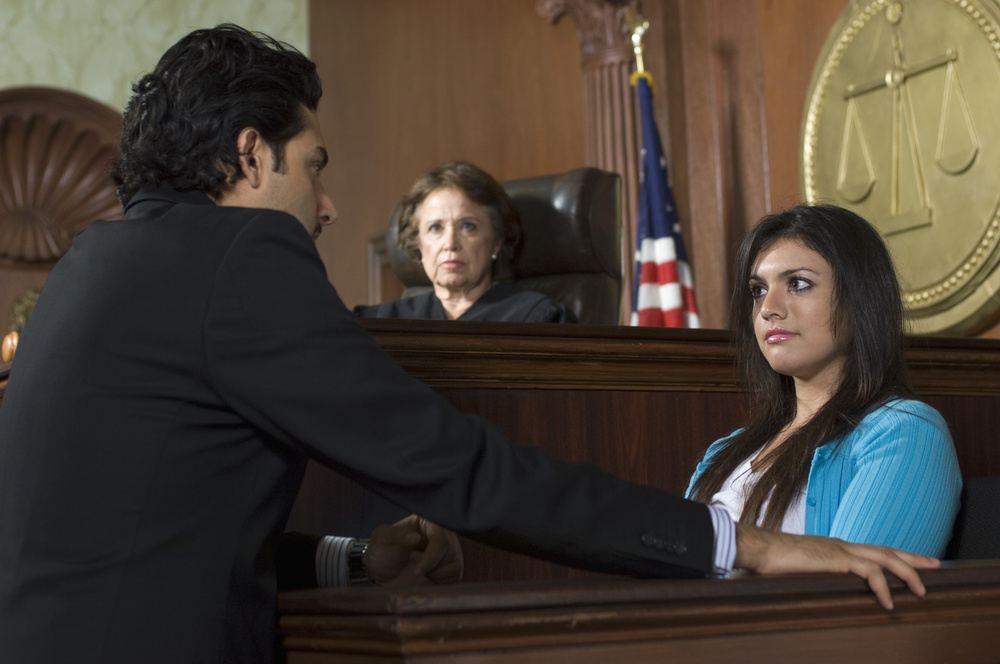The Pros and Cons of Having a Communicator in the Courtroom

When engaged in litigation public relations, one question to be decided at the outset is whether to have a communicator in the courtroom during a trial or important hearing. Several factors go into this question. We think, in most cases, the pros outweigh the cons, but we don’t deny there are issues involved.
First are the baseline questions of whether the PR representative is needed at all. Is this a proceeding journalists will cover? Will it provide breaking news, or could journalists be briefed afterward? Will having a communications team member there help the journalists understand the issues and “story” behind the case? Another consideration: Is the lead litigator on your team particularly bad with the press, and so could use the assistance of a PR person?
Second, consider whether legal-team members are onboard with having a communicator in the courtroom. Sometimes they’re not. They may believe the PR person will reveal legal strategy or some other state secret to the journalists.
This tends to boil down to a matter of trust — but, in all honesty, if your lawyers don’t trust your communicators to be present in the courtroom, perhaps it’s time to get a new litigation communications team. More often, lawyers might fear that, if the judge learns about a PR person working the courtroom, he or she won’t be happy about it. The reality is, that’s unlikely to happen.
Which is not to say the opposition won’t try to make something of it. For example, in his book In the Court of Public Opinion: Winning Strategies for Litigation Communications, CrisisResponsePro founder James F. Haggerty tells of an opposing lawyer bringing to the judge’s attention that Haggerty was issuing press releases about the case. The judge seemed unconcerned and reminded both sides not to try the case in the media.
Third, consider what you are seeking to accomplish. At its core, you’re hoping that the stories about the trial or other proceeding will accurately reflect your side of the litigation. Given that nearly all journalists are now real-time journalists (that is, they file stories from the courthouse continuously throughout the day), having someone nearby helps get into the hands of reporters — in real time — the information or documents that support your point of view. You can put an adverse decision in context, for example, by pointing out that the ruling is only procedural.
‘Strictly Procedural’
In In the Court of Public Opinion, Haggerty tells the story of just such an incident, when a court hearing went downhill for his client. Afterward, he was able to have representatives from a nonprofit supporting the client go before the cameras while he and the client put the finishing touches on a statement emphasizing that the adverse ruling was “strictly procedural.”
At the very least the communicator can facilitate reporters’ access to the lead litigator or other lawyer who will speak for the team. Often reporters need explanations of what transpired (or its import) in the courtroom. Sometimes they simply miss what a lawyer said and need clarification (and may not have the luxury of being able to wait for the transcript).
If you’re the person tapped to do this job, it’s a good idea to introduce yourself to the reporters at the outset, so they know you’re there and what your function is. It can also be a time to ingratiate yourself with the journalists by, for example, going to lunch with one or more of them (if they don’t have a story to file). Just beware that some reporters will appreciate your presence (and help), and others might resent it.
Finally, the courtroom PR person should always obey courtroom etiquette. This is especially so because of the sensitivities some lawyers have about working with communicators. Here are some tips:
- Don’t talk (or keep it to a minimum) when the judge is on the bench (talk to the reporters during the breaks).
- Don’t go into the well of the courtroom unless invited to.
- Don’t read newspapers during the proceeding (if anyone still reads newspapers).
- Rise with the other courtroom observers when the judge or jury enters.
- Make sure your phone ringer is off (if phones are even allowed).
Disobeying that last one — having your ringtone serenade the courtroom — will definitely cause the judge to take judicial notice of you. And not in a good way.
Photo Credit: Sirtravelalot/Shutterstock
This is an abridged version of an article that appeared today on the CrisisResponsePro paid subscription portal. (CrisisResponsePro subscribers can access the full version by clicking here. ID and password are required.) To take advantage of all of the content, data, and collaborative resources CrisisResponsePro has to offer, contact us at info@crisisresponsepro.com.




 Back to Blog
Back to Blog